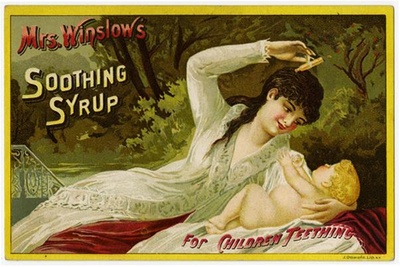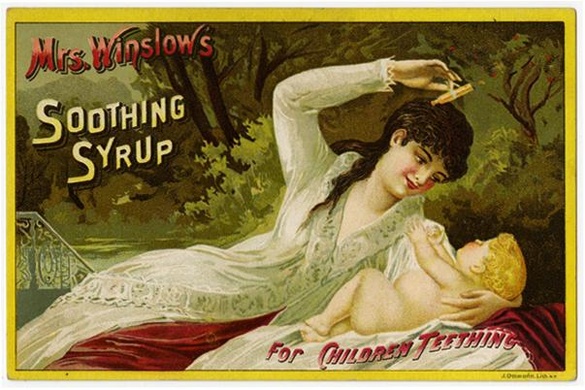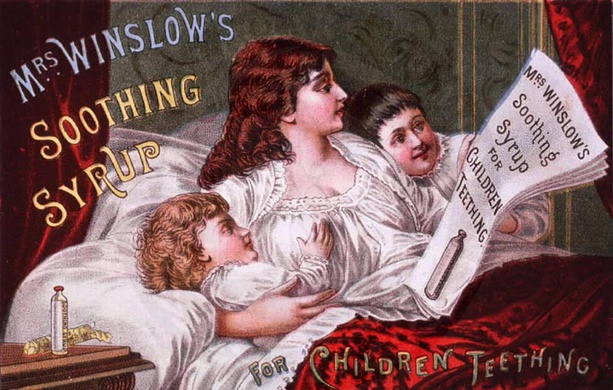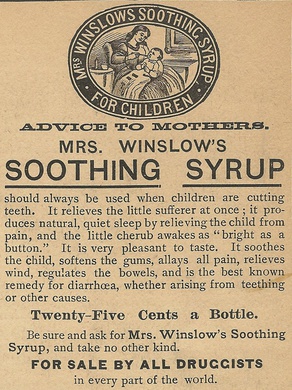
The 19th century was a profitable time for the makers of patent medicines. These were trademarked products with secret formulas and sold over-the-counter. In a time of high infant mortality and limited access to medical care, the children's market was particularly lucrative. Several products with names such as Godfrey's Cordial or Mother's Quietness were widely available, but the most famous was Mrs. Winslow's Soothing Syrup, introduced in 1845.
The makers, Jeremiah Curtis and Benjamin A. Perkins, of Bangor, Maine, claimed it was a cure for teething pain and a number of other ills experienced by infants. Their advertising was visually attractive and often presented idyllic domestic images of mother and child. Since the two primary ingredients in Mrs. Winslow’s Soothing Syrup were morphine and alcohol it is not surprising that the syrup relieved pain and diarrhea (a common side effect of all opioids is constipation).
These patent medicines were liberally used by hired nurses who cared for the children of working mothers. The over use of these narcotics no doubt contributed to increased child mortality in factory towns. Mrs. Winslow's Soothing Syrup was denounced by the American Medical Association in 1911, but was not completely withdrawn from sale until 1930.
Source: Mrs. Winslow's Soothing Syrup (n.d.) The Wood Library Museum.
| Drugs: | Opium (morphine, heroin, opioids) |
|---|---|
| Regions: | UK (England, Scotland, Wales, Northern Ireland), USA (United States of America) |
| Topics: | Medicinal use of drugs |


